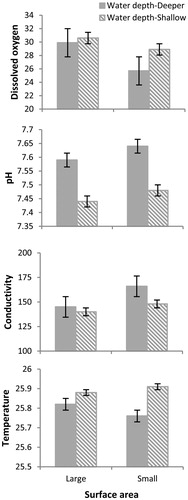Figures & data
Figure 1 Differences observed at 15 days after the start of the experiment in the morphological variables of Physalaemus albonotatus tadpoles exposed to different water depth and surface areas. The values are means (± SE). The four morphological variables reduce significantly for tadpoles raised in containers with shallow water compared to one with deeper water. Interaction between deeper water and small surface area increased significantly body length.
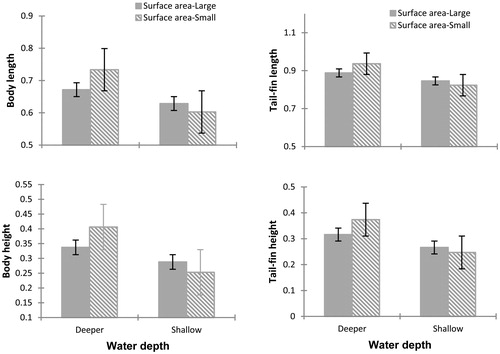
Figure 2 Differences observed at 15 days after the start of the experiment in the developmental stage of Physalaemus albonotatus tadpoles exposed to different water depths and surface areas. The values are means (± SE). The development stage increases significantly for tadpoles raised in containers with deeper water compared to one with shallow water. Interaction between deeper water and small surface area is increased significantly the development stage.
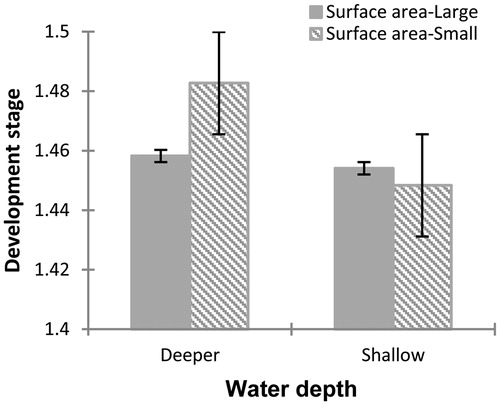
Table 1 Results of ANOVA test exploring water depth and surface area as factors that could influence four morphological variables and developmental stage of Physalaemus albonotatus tadpoles. Data registered at 15 days after the start of the experiment.
Figure 3 Differences observed at 30 days after the start of the experiment in the morphological variables of Physalaemus albonotatus tadpoles exposed to different water depths and surface areas. The values are means (± SE). The body length and body height are increased significantly for tadpoles raised in containers with small surface area compared to one with large surface area. No significant difference was observed in the interaction of both factors.

Figure 4 Differences observed at 30 days after the start of the experiment in the developmental stage of Physalaemus albonotatus tadpoles exposed to different water depths and surface areas. The values are means (± SE). The development stage is increased significantly for tadpoles raised in containers with small surface area compared to one with large surface area. No significant difference was observed in the interaction of both factors.
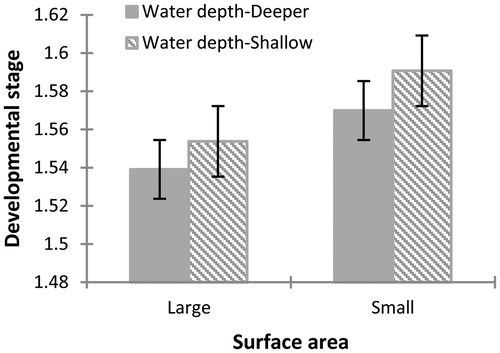
Table 2 Results of ANOVA test exploring water depth and surface area as factors that could influence four morphological variables and developmental stage of Physalaemus albonotatus tadpoles. Data registered at 30 days after the start of the experiment.
Figure 5 Differences observed in days to metamorphosis for Physalaemus albonotatus tadpoles exposed to different water depth and surface areas. The values are means (± SE). Tadpoles reach metamorphosis earlier in containers with small surface area than in one with large surface area. No significant difference was observed in the interaction of both factors.
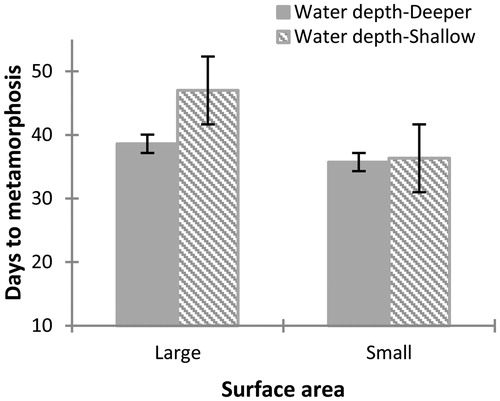
Table 3 Results of ANOVA test exploring water depth and surface area as factors that could influence two metamorphic variables of Physalaemus albonotatus.

